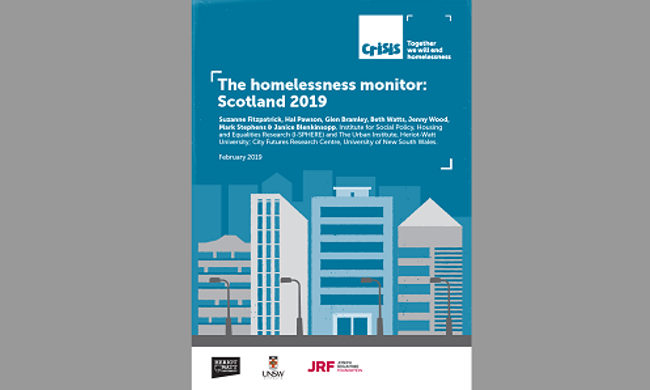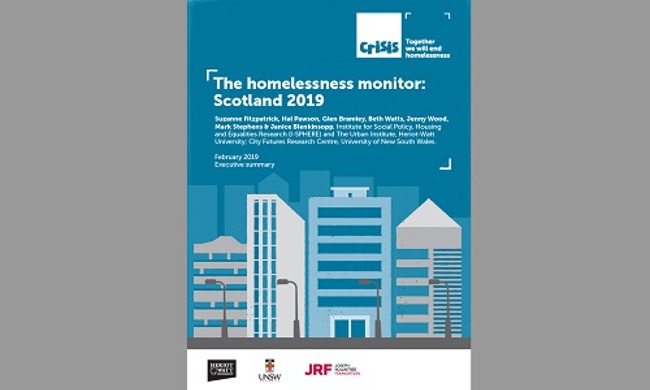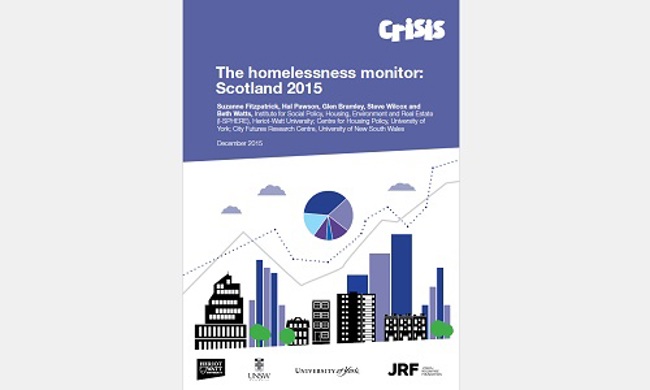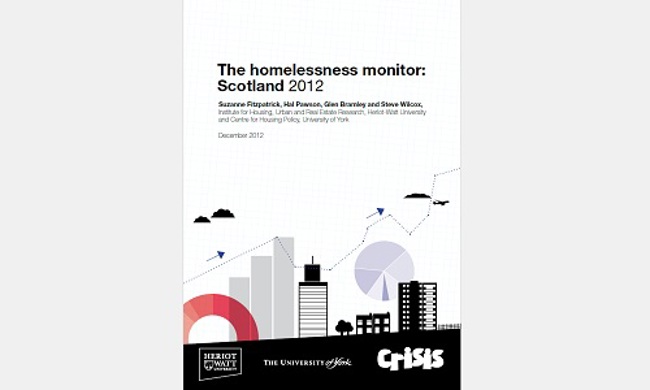The Homelessness Monitor: Scotland 2019
25.02.2019
The Homelessness Monitor: Scotland 2019 is the third annual report of an independent study, funded by Crisis and the Joseph Rowntree Foundation, of the homelessness impacts of recent economic and policy developments in Scotland.
Key findings
- In the three years since the last report was published, homelessness has become a key policy priority for the Scottish Government, which has recently set out a bold plan to end homelessness giving effect to the recommendations set out by the Homelessness and Rough Sleeping Action Group (HARSAG).
- This year’s monitor shows that the overall scale of statutory homelessness in Scotland has been relatively flat for the past five years. In 2017/18 Scottish local authorities logged 34,950 stautory homelessness assessments, of which 28,792 were assessed as homeless. Levels of rough sleeping have also remained relatively stable over the last three years at a national level, although there has been considerable variation in trends between different localities.
- After a marked increased in homelessness temporary accommodation placements until 2010, overall numbers have remained fairly stable. As of 31st March 2018 there were 10,933 households in temporary accommodation in Scotland. Whilst most of these placements are in ordinary social housing stock, there has been a 12% increase in bed and breakfast placements in the three years to 2018. Temporary accommodation placements involving family households increased by 25% over the same period revealing blockages in the system that are restricting people’s ability to build a better life and move on from homelessness.
- The number of new lets in the social rented sector overall had been on a declining trajectory since 2013/14, but increased in 2017/18 compared to 2016/17. The number of lets to homeless applicants has risen as a result of a higher proportion of lets being made to this group. Nevertheless, half of local authorities reported difficulties in accessing both local authority and housing association tenancies.
- Both the abolition of the Right to Buy and the Scottish Government’s affordable housing programme have been generally welcome by stakeholders. The signs are that the target of 50,000 units, 35,000 of which are to be social rented, will be met by 2021.
- The private rented sector has grown enormously over the past 20 years, and all age groups under 75 are now more likely to live in the sector than was the case 20 years ago. Almost one-quarter of lone parents are private tenants and 15% of children live in the tenure.
- Local authorities generally believed that post-2010 welfare reform has exacerbated homelessness in their area, although almost all acknowledged that its impacts had been mitigated by the Scottish Government, particularly via Discretionary Housing Payments.
- Three-quarters of Scottish local authorities anticipate that the full rollout of Universal Credit will exacerbate homelessness in their area over the next two years. The consensus of concern is almost as strong with respect to the lowering of the Benefit Cap.
- Homelessness has recently become a key policy priority for the current Scottish Government, with a shortlife Homelessness and Rough Sleeping Action Group appointed by the First Minister in September 2017, alongside the announcement of £50 million additional expenditure on homelessness over the next five years. A Scottish Government ‘Ending Homelessness Together: High Level Action Plan’, published in November 2018 seeks to address all 70 HARSAG recommendations.
- HARSAG recommendations on rapid rehousing and Housing First in particular were welcomed by many local authorities, but those in more pressured/rural areas tended to be more critical.
Reference
Fitzpatrick,S., Pawson, H., Bramley, G., Wilcox, S., Watts, B., Wood, J., Stephens, M. & Blenkinsopp, J. (2019) The Homelessness Monitor: Scotland 2019, London: Crisis.





